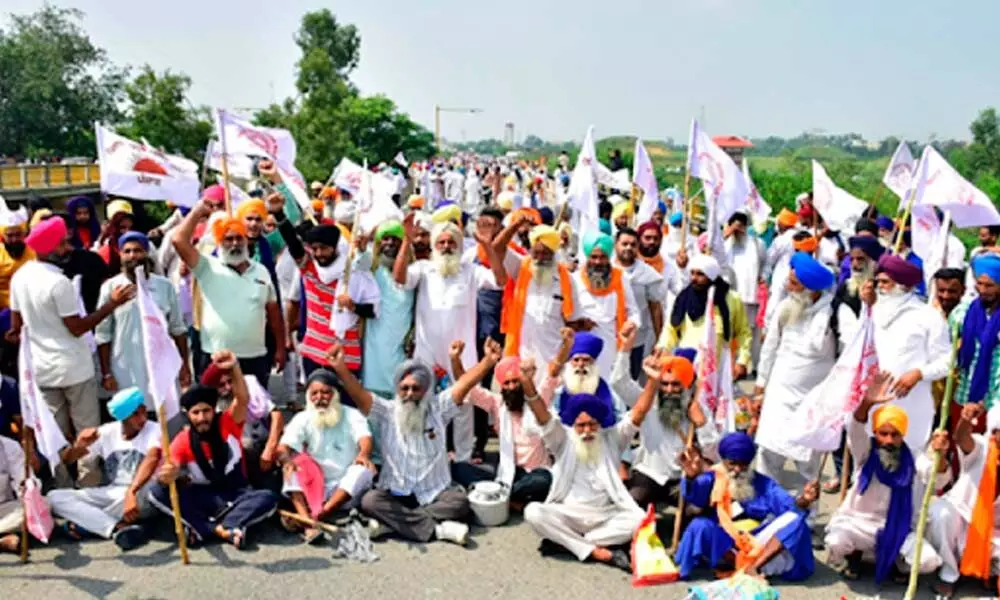India's angry farmers have a reason to worry
Protests may have less to do with the recent reforms
image for illustrative purpose

The third rail of Indian politics has always been agriculture. While the economy has been partly liberalized since opening up to the world in 1991, the process has largely bypassed the three-fifths of Indians who depend for their livelihoods, directly or indirectly, on farming. In September, the government finally introduced a much-needed set of changes to how agriculture is organized and how produce is sold in India. Now tens of thousands of agitating farmers have marched upon New Delhi in protest.
The protests may have less to do with the recent reforms, which allow farmers to enter into direct contracts with purchasers and which eliminate the monopoly government warehouses previously held on the wholesale trade, than those that may be coming. The answer isn't for the government to reverse course - it's to go further.
Unlike many other countries, India doesn't provide direct income support to its farmers. Various farm insurance schemes have also failed to get off the ground. Instead, what the government does is buy produce - mostly rice and wheat. This is then stored in the warehouses of the state-controlled Food Corporation of India and distributed at a subsidized price to the population.
The system guarantees farmers a set price for their output, while their inputs - water, power, fertilizer, seeds - are free or subsidized. It dates from the 1960s, when famines devastated an India that did not grow enough to feed itself. For several humiliating years, the country survived on US food aid - what was then called a "ship-to-mouth existence."
Following pressure from President Lyndon B Johnson's White House, Indian policymakers shifted from imposing a cap on food prices, inspired by Soviet-era economics, to setting a minimum support price, as advised by American economists. That, together with newly developed food grains, became the basis for the so-called Green Revolution, in which wheat production doubled in less than a decade.
Unfortunately, the subsidies for rice and wheat caused too few farmers to plant vegetables, which are subject to major price fluctuations. (They are a constant headache for the inflation-targeting central bank.) Meanwhile, India produces too much grain, which is now rotting in government granaries. Policies designed for an India on the edge of starvation don't fit the India of today, which should be more worried about quality of its nutrition.
Those policies were also geographically biased, mostly benefiting the prosperous state of Punjab in northern India and neighbouring regions. Although it only accounts for 2 per cent of India's population, Punjab was responsible for four-fifths of government wheat purchases earlier this year.
The state, which is practically semi-desert, also grows water-intensive rice. Farmers use free power to pump groundwater to flood their fields, causing the water table to fall to critical lows. Power subsidies eat up 10 per cent of the state's budget, leaving it unable to spend on other development activities.
Not surprisingly, most of the demonstrators converging on Delhi come from these same regions. The issue is one of trust. The government has insisted that it does not intend to end the current grain procurement system. But, given how it rammed through the September reforms hastily and with minimal discussion, farmers don't believe the pledge.
And they shouldn't, because the current system can't last. Historically, the subsidies have been so politically important that India has held the entire World Trade Organization to ransom in order to protect them. But the arrangement cannot be sustained unless backed by a political consensus. The protesters recognize that the passage of these new laws implies that that consensus is eroding. In many parts of India, there has been little or no protest. To those most dependent on agricultural support prices, the end of the system may now look inevitable.
The problem is that the government has failed to admit this and explain how it intends to compensate those farmers and regions that will lose out if subsidies are eliminated. On top of the recent reforms, India needs to develop a more modern income support system for those who grow its food. An assurance that nobody is going to wind up losing their livelihood would help convince the agitating farmers that overdue changes are not something to fear. (Bloomberg)
(The author of this story Mihir Sharma can be contacted at [email protected])

